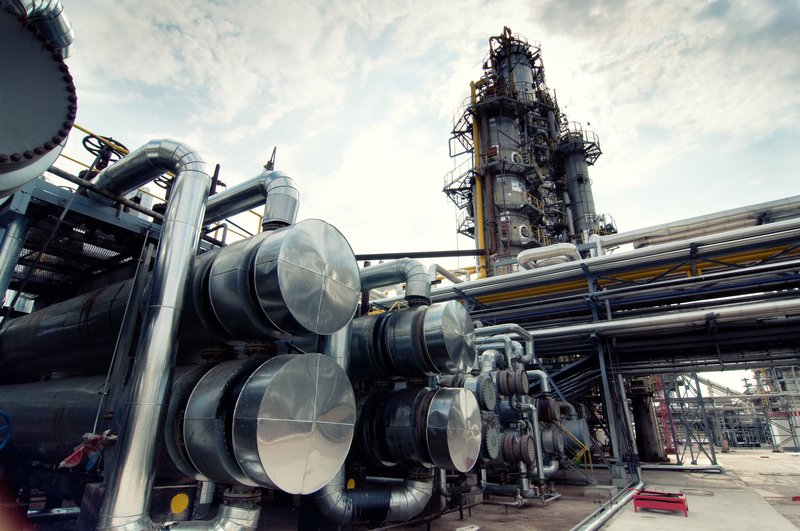NEW YORK, July 10, 2024 /PRNewswire/ — The global fuel cells for automotive industry is poised for substantial growth, with an estimated USD 8.57 billion increase from 2024 to 2028, driven by a robust CAGR of 35.28%. Increasing demand for efficient and cleaner fuel solutions is a primary growth driver, alongside efforts to reduce the cost of fuel cell systems. However, challenges such as inadequate refueling infrastructure for FCEVs persist. Key technological advancements in fuel cell components include innovations in membrane electrode assembly (MEA), catalyst materials, and stack design optimization, enabling enhanced efficiency and durability. Leading market players include Acumentrics Inc., Ballard Power Systems Inc., Hyundai Motor Co., and others at the forefront of advancing these technologies.
Get a detailed analysis on regions, market segments, customer landscape, and companies- View the snapshot of this report
|
Fuel Cells for Automotive Industry Market Scope |
|
|
Report Coverage |
Details |
|
Base year |
2023 |
|
Historic period |
2018 – 2022 |
|
Forecast period |
2024-2028 |
|
Growth momentum & CAGR |
Accelerate at a CAGR of 35.28% |
|
Market growth 2024-2028 |
USD 8572.6 million |
|
Market structure |
Fragmented |
|
YoY growth 2022-2023 (%) |
28.37 |
|
Regional analysis |
APAC, North America, Europe, South America, and Middle East and Africa |
|
Performing market contribution |
APAC at 50% |
|
Key countries |
US, Japan, South Korea, China, and Germany |
|
Key companies profiled |
Acumentrics Inc., Ballard Power Systems Inc., BorgWarner Inc., Ceres Power Holdings plc, Cummins Inc., ElringKlinger AG, Hyster Yale Materials Handling Inc., Hyundai Motor Co., Intelligent Energy Ltd., ITM Power PLC, Nedstack Fuel Cell Technology BV, Nel ASA, PowerCell Sweden AB, PRAGMA INDUSTRIES, Proton Motor Fuel Cell GmbH, The Symbio SAS, TW Horizon Fuel Cell Technologies, Valmet Automotive Group, and W. L. Gore and Associates Inc. |
Market Driver
Fuel cell technology has experienced significant advancements, leading to cost reductions in manufacturing. Initially, fuel cell vehicles were considered expensive, with Honda’s FCX Clarity sedan costing millions of dollars. However, automakers are making strides to decrease production costs, such as reducing the platinum content in fuel cells. Hyundai, for instance, has lowered the price of its FCEV by 70% over the past decade. This cost reduction will positively impact the market by making fuel cell vehicles more affordable, thereby driving market growth during the forecast period.
The automotive industry is seeing a shift towards cleaner and more sustainable energy sources, with hydrogen-based fuel gaining significant attention. Fuel cell technology, which converts hydrogen into electricity through a chemical reaction, is becoming increasingly popular in the transportation sector. Leading companies like Ballard Power Systems and Plug Power are at the forefront of this trend, developing SOFC (Solid Oxide Fuel Cell) technology for both small-scale fuel cells for vehicles and large-scale fuel cells for clean hydrogen hubs. The tri-gen system, which generates hydrogen on-site from natural gas or renewable sources, is another promising development. However, high purchase prices and the need for hydrogen refueling infrastructure remain challenges. The adoption rate of fuel cell vehicles is expected to grow as governments push for reducing carbon emissions and electric vehicle sales. The global energy review indicates that hydrogen, as an alternative energy source, will play a crucial role in reducing vehicle emissions and greenhouse gas emissions in the transport segment. The transportation sector, including garbage trucks, is also exploring the use of fuel cell technology for environment-friendly operations. Despite high fuel prices, the benefits of fuel cells, such as zero emissions and the ability to generate electricity, make them an attractive option for businesses looking to reduce their carbon footprint. Air compressors, power conditioners, and other balance of plant components are essential for the efficient operation of fuel cell systems. Hydrocarbon-based fuels will continue to be used in the short term, but the future lies in clean, renewable hydrogen.
Discover 360° analysis of this market. For complete information, schedule your consultation – Book Here!
Market Challenges
- The fuel cells market for automotive industry faces significant challenges in achieving large-scale commercial adoption due to the limited number of hydrogen filling stations globally. This issue is exacerbated by the fact that hydrogen stations are outnumbered by natural gas refueling stations and charging stations for electric vehicles (EVs). EVs have gained popularity due to advancements in battery technology, which has lowered production costs and increased range, making them a competitive option for consumers. Additionally, the recent decline in oil prices has narrowed the economic gap between diesel vehicles and alternative fuel vehicles, potentially leading to the prolonged use of less efficient vehicles. Constructing hydrogen filling stations presents significant challenges, including user needs, access and installation, and site parameters, which can vary greatly from country to country. For instance, in Japan, hydrogen stations must be manned and cannot be self-service, and fuel dispensers must be at least eight meters away from the nearest street, posing challenges in densely populated areas and potentially hindering market growth during the forecast period.
- The automotive industry is exploring fuel cells as a viable alternative to traditional internal combustion engines for zero-emission vehicles. However, challenges persist in implementing fuel cells for mass market adoption. Hydrogen storage poses a significant challenge due to its low energy density, requiring large volumes and weights. Efficiency, safety, and cost are also critical factors. PEM fuel cells generate water as a byproduct, requiring effective water management. Proton conductivity, activation potential, flooding, and drying out are technical considerations. Hydrogen’s high reactant flow rates and pressures necessitate robust cell designs with efficient gas channels and current density management. Key players like Bloom Energy are leading the way in fuel cell innovation for residential, data centers, utilities, military and defense, hospitals, hotels, shopping center malls, office buildings, and sports centers. Government incentives and renewable energy use are driving fuel cell adoption. Challenges include optimizing component materials, water management, and addressing hydrogen storage, weight, volume, and cost concerns.
For more insights on driver and challenges – Request a sample report!
Segment Overview
This fuel cells for automotive industry market report extensively covers market segmentation by
- Fuel Type
- 1.1 Hydrogen
- 1.2 Methanol
- Application
- 2.1 Light-duty vehicles
- 2.2 Heavy-duty vehicles
- 2.3 Others
- Geography
- 3.1 APAC
- 3.2 North America
- 3.3 Europe
- 3.4 South America
- 3.5 Middle East and Africa
1.1 Hydrogen- The automotive fuel cell market is experiencing significant growth due to increasing demand for clean energy solutions. Major automakers, such as Toyota and Hyundai, have already launched hydrogen-powered vehicles. Government initiatives and incentives are also boosting the market. Fuel cell technology offers several advantages, including long range and quick refueling times. As the cost of production decreases, fuel cells are expected to become more competitive with traditional internal combustion engines. The market is projected to reach USD100 billion by 2027.
For more information on market segmentation with geographical analysis including forecast (2024-2028) and historic data (2017-2021) – Download a Sample Report
Research Analysis
The fuel cell market for the automotive industry is gaining momentum as a viable alternative to traditional internal combustion engines for reducing vehicle emissions and greenhouse gas (GHG) outputs. Fuel cell vehicles (FCVs) use hydrogen-based fuel to generate electricity that powers an electric motor, emitting only water as a byproduct. With increasing concerns over electric vehicle (EV) battery production’s carbon footprint and limited charging infrastructure, hydrogen fuel cells offer a promising solution. The adoption rate of FCVs is growing slowly but steadily, with key factors including the availability of clean hydrogen hubs and advancements in fuel cell technology, such as Solid Oxide Fuel Cells (SOFC). The global energy review projects significant growth in the fuel cell market, driven by the transportation sector’s need to reduce carbon emissions. The tri-gen system, which generates hydrogen on-site, further enhances the appeal of FCVs. Ballard Power Systems and Plug Power are leading companies in the fuel cell industry, focusing on stack development and balance of plant components, such as air compressors and power conditioners.
Market Research Overview
Fuel cells are an emerging technology in the automotive industry, offering a viable solution for reducing vehicle emissions and reliance on traditional fossil fuels. Fuel cell vehicles (FCVs) use hydrogen as an alternative energy source, converting it into electricity through a chemical reaction with oxygen in the air. This electricity powers an electric motor, resulting in zero greenhouse gas emissions at the tailpipe. Despite the environmental benefits, the adoption rate of FCVs is still relatively low due to high purchase prices and limited hydrogen refueling infrastructure. However, with increasing concerns over high fuel prices and the need to reduce carbon emissions, the market for fuel cells in the automotive industry is expected to grow. Fuel cells are also finding applications in other sectors, such as garbage trucks and data centers, where heavy energy demands require a reliable and efficient power source. PEM fuel cells are the most common type used in transportation applications due to their high efficiency, quick response time, and ability to generate water as a byproduct. The design of fuel cells involves careful consideration of factors such as weight, volume, efficiency, safety, cost, durability, and water management. Key components include the polymer membrane, catalyst sites, gas diffusion backings, gas channels, and current density. Prominent companies in the fuel cell industry include Bloom Energy, Ballard Power Systems, and Plug Power, among others. They are active in various sectors, from residential and data centers to utilities, military and defense, hospitals, hotels, shopping center malls, office buildings, sports centers, and transportation. The future of fuel cells in the automotive industry looks promising, with incentives for renewable energy use and the development of clean hydrogen hubs to reduce carbon emissions. However, challenges remain, such as the need for hydrogen storage, hydrogen refueling infrastructure, and the high cost of fuel cells compared to batteries. In the transportation sector, FCVs face competition from battery electric vehicles (BEVs), which have seen a surge in sales in recent years. However, fuel cells offer advantages such as longer range, faster refueling times, and the ability to generate electricity on the go. The global fuel cell market is expected to grow significantly in the coming years, driven by advancements in technology and increasing demand for clean energy solutions. SOFCs (Solid Oxide Fuel Cells) are also gaining attention for their potential in stationary applications, such as power generation for homes and businesses. In conclusion, fuel cells offer a promising solution for reducing greenhouse gas emissions in the transportation sector and other applications. While challenges remain, the potential benefits and advances in technology make fuel cells an exciting area to watch in the energy industry.
Table of Contents:
1 Executive Summary
2 Market Landscape
3 Market Sizing
4 Historic Market Size
5 Five Forces Analysis
6 Market Segmentation
- Fuel Type
- Hydrogen
- Methanol
- Application
- Light-duty Vehicles
- Heavy-duty Vehicles
- Others
- Geography
- APAC
- North America
- Europe
- South America
- Middle East And Africa
7 Customer Landscape
8 Geographic Landscape
9 Drivers, Challenges, and Trends
10 Company Landscape
11 Company Analysis
12 Appendix
About Technavio
Technavio is a leading global technology research and advisory company. Their research and analysis focuses on emerging market trends and provides actionable insights to help businesses identify market opportunities and develop effective strategies to optimize their market positions.
With over 500 specialized analysts, Technavio’s report library consists of more than 17,000 reports and counting, covering 800 technologies, spanning across 50 countries. Their client base consists of enterprises of all sizes, including more than 100 Fortune 500 companies. This growing client base relies on Technavio’s comprehensive coverage, extensive research, and actionable market insights to identify opportunities in existing and potential markets and assess their competitive positions within changing market scenarios.
Contacts
Technavio Research
Jesse Maida
Media & Marketing Executive
US: +1 844 364 1100
UK: +44 203 893 3200
Email: media@technavio.com
Website: www.technavio.com/
![]() View original content to download multimedia:https://www.prnewswire.com/news-releases/fuel-cells-for-automotive-industry-market-size-is-set-to-grow-by-usd-8-57-billion-from-2024-2028–increased-demand-for-efficient-and-cleaner-fuel-boost-the-market-technavio-302192949.html
View original content to download multimedia:https://www.prnewswire.com/news-releases/fuel-cells-for-automotive-industry-market-size-is-set-to-grow-by-usd-8-57-billion-from-2024-2028–increased-demand-for-efficient-and-cleaner-fuel-boost-the-market-technavio-302192949.html
SOURCE Technavio

Featured image: Megapixl © Studioceja











